ESG / CSR
Industries
The Harmful Effects of our Lithium Batteries
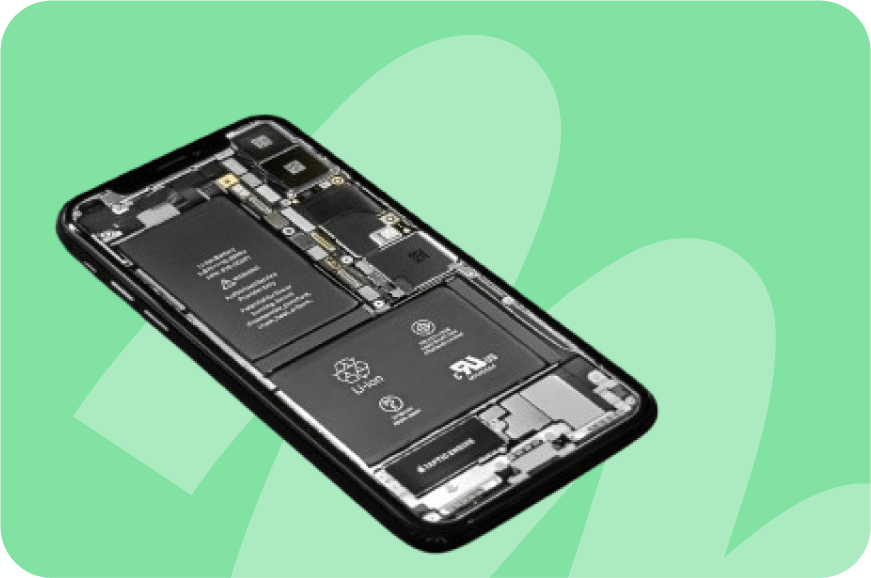


Lithium and lithium-ion batteries have been heralded as environmental saviors, allowing us to decrease our reliance on carbon-intensive fossil fuels and transition to electric vehicles (EVs) and other more environmentally friendly technologies. These batteries power everything from smartphones to electric cars, positioning themselves at the forefront of the green energy revolution.
However, the materials needed to create these batteries - ingredients such as lithium, cobalt, and nickel - present significant environmental and ethical challenges. The processes used to extract these metals can be incredibly harmful to the environment and local communities, leading to soil degradation, water shortages, and loss of biodiversity.
In this article, we will explore the complex lifecycle of lithium batteries, from extraction to disposal, examining the heavy environmental costs associated with them. We will delve into the detrimental effects of lithium mining, the socio-economic impact on local communities, and the often-overlooked environmental footprint of battery production and recycling. By the end, you'll understand why lithium batteries are not necessarily the environmentally friendly alternative we have been led to believe.
👉 In this article we'll explore why lithium batteries come with their own heavy environmental cost, and why they're not necessarily the environmentally friendly alternative we've been led to believe.
What Are Lithium Batteries?
Lithium batteries have become a cornerstone of modern energy storage, powering everything from everyday gadgets to electric cars. These batteries operate using lithium ions that shuttle between the anode and cathode, creating a flow of electricity. Their ability to store a large amount of energy in a relatively small and lightweight package has made them indispensable in our tech-driven world.
There are various types of lithium batteries, each tailored for specific applications and offering unique benefits. They include lithium-ion (Li-ion), lithium iron phosphate (LiFePO4), lithium polymer (LiPo), and lithium manganese oxide (LiMn2O4) batteries.
Types of Lithium Batteries
Lithium-Ion (Li-ion) Batteries:
Li-ion batteries are widely used in portable electronics and electric vehicles due to their high energy density and efficiency. These batteries typically last between 2 to 10 years, depending on their usage pattern and condition. They are known for their lightweight and high charge density, which makes them ideal for mobile phones, laptops, and electric vehicles.
Lithium Iron Phosphate (LiFePO4) Batteries:
LiFePO4 batteries are renowned for their enhanced safety and longevity compared to traditional Li-ion batteries. They have a life expectancy ranging from 5 to 15 years, making them suitable for applications requiring high reliability and safety, such as stationary energy storage systems and electric buses. These batteries are less prone to overheating and thermal runaway, which enhances their safety profile.
Lithium Polymer (LiPo) Batteries:
LiPo batteries are commonly used in drones, remote-controlled devices, and certain portable electronics. They offer a flexible form factor and lightweight design, but their lifespan typically ranges between 2 to 5 years. While they provide high power density and can be molded into various shapes, they are more sensitive to physical damage and require careful handling to prevent safety issues.
Lithium Manganese Oxide (LiMn2O4) Batteries:
LiMn2O4 batteries are often used in power tools, medical devices, and some electric vehicles due to their moderate cost and good performance. They generally have a lifespan of around 3 to 7 years. These batteries offer a good balance of safety, cost, and performance, making them versatile for various applications.
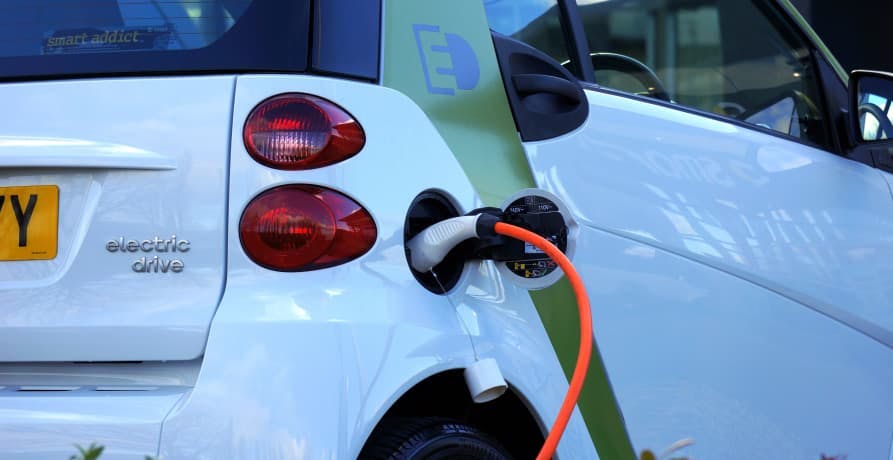
How Do Lithium Batteries Work?
Lithium batteries operate based on the movement of lithium ions between two electrodes - a positive cathode and a negative anode - through an electrolyte. When the battery is discharging, lithium ions move from the anode to the cathode, generating an electric current that powers the connected device. During charging, this process is reversed: lithium ions move from the cathode back to the anode, where they are stored until the battery is used again. This reversible flow of ions is what allows lithium-ion batteries to be recharged multiple times.
The specific materials used in the electrodes and electrolytes significantly influence the battery's performance. The anode is typically made of graphite, while the cathode is composed of lithium metal oxides, such as lithium cobalt oxide or lithium iron phosphate. The electrolyte, a lithium salt dissolved in an organic solvent, facilitates the movement of ions between the electrodes. This combination of materials provides a high energy density, allowing lithium batteries to store a substantial amount of energy in a relatively small and lightweight package, making them ideal for portable electronics and electric vehicles.
The Benefits of Lithium Batteries in the Green Transition
The role of lithium batteries in the green transition is pivotal. As the world moves towards reducing greenhouse gas emissions and dependency on fossil fuels, lithium batteries enable the shift to cleaner energy solutions. In electric vehicles, lithium batteries provide a zero-emission alternative to internal combustion engines which rely on fossil fuel production, significantly reducing air pollution and carbon emissions. Furthermore, lithium batteries are essential for storing energy generated from renewable sources such as solar and wind. This storage capability addresses the intermittent nature of renewable energy, ensuring a stable and reliable power supply even when the sun isn't shining or the wind isn't blowing.
The adoption of lithium batteries is also supported by continuous advancements in battery technology, which are driving improvements in energy density, charging speed, and overall performance. These advancements are making electric vehicles more affordable and practical for everyday use.
Additionally, the development of grid-scale lithium battery storage solutions is enhancing the integration of renewable energy into national grids, promoting a more sustainable and resilient energy infrastructure.
What Are the Environmental Impacts of Lithium Batteries?
It's easy to understand why people associate lithium and lithium-ion batteries with being environmentally friendly. After all, when we use batteries we're potentially avoiding the use of other more carbon-intensive energy sources. Take electric cars for example, they run on lithium-ion batteries, and by purchasing an EV we are cutting down on the burning of fossil fuels such as petroleum.
However, this is not the whole story, and lithium (and lithium-ion) batteries are increasingly attracting media attention and criticism for their negative environmental impacts. Let's take a closer look at the environmental concerns associated with lithium batteries.
The Problem with Lithium Extraction
One of the primary reasons that lithium and lithium-ion batteries are considered to be harmful is because the extraction of lithium is so damaging to the environment.
There are two main methods of commercial lithium extraction, namely salt flat brine extraction and open-pit mining:
Salt Flat Brines
The majority of the world's lithium production involves salt flats, a method that capitalizes on natural lithium-rich brine deposits found in subterranean reservoirs. These reservoirs are predominantly located in the Lithium Triangle - a region spanning the borders of Bolivia, Argentina, and Chile. This area is known for its vast lithium resources, estimated to contain around 56% of the world's known lithium reserves.
Extraction Process:
| Step | Description |
|---|---|
| Pumping the Brine | The extraction process begins by pumping the lithium-rich saltwater from underground reservoirs to the surface. This brine is usually found at depths ranging from 30 to 100 meters below the surface. |
| Evaporation Ponds | The extracted brine is then channeled into large evaporation ponds. These ponds are shallow and spread over large areas to maximize surface exposure to the sun. Over a period of 12 to 18 months, solar radiation and dry conditions cause the water to evaporate, gradually increasing the concentration of lithium in the brine. |
| Concentration of Lithium | As the water evaporates, the remaining brine becomes more concentrated with lithium. Initially, the brine forms a mixture containing manganese, potassium, borax, and lithium salts. This mixture is filtered and transferred to successive evaporation ponds, further purifying and concentrating the lithium content at each stage. |
| Chemical Processing | Once the lithium concentration is sufficiently high, the brine is transferred to a recovery facility. Here, various chemical processes, including precipitation and filtration, are used to extract lithium carbonate or lithium hydroxide, the compounds used in battery production. |
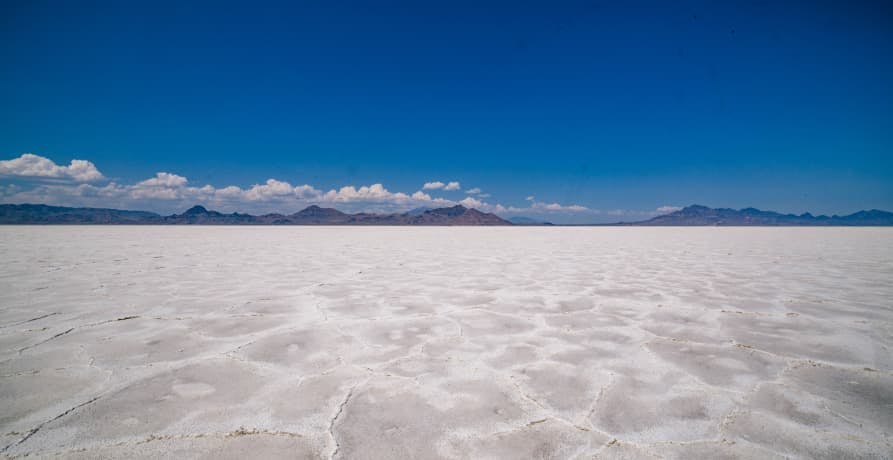
Open-Pit Mining
The other form of commercial lithium production involves hard rock mining. This is a much more complex and intensive process than the salt flat brine extraction.
Australia is home to the majority of the world's open-pit mining operations, though smaller operations also exist in Brazil, Portugal, South Africa, and China. Finland and North America are also expected to open lithium mines in the coming years.
Mining Process:
| Step | Description |
|---|---|
| Extraction of Ore | Open-pit mining begins with the removal of overburden (the soil and rock covering the lithium-rich ore). Heavy machinery is used to drill, blast, and remove large quantities of rock to access the lithium-containing spodumene ore beneath. |
| Crushing and Milling | Once the ore is mined, it is transported to a processing plant where it is crushed into smaller pieces to increase the surface area for the extraction process. This initial crushing helps in the subsequent steps of lithium extraction. |
| Heating and Conversion | The crushed ore is then heated to high temperatures in a kiln. This heating process, known as calcination, transforms the lithium-bearing spodumene into a more reactive form called beta-spodumene. |
| Acid Leaching | The beta-spodumene is then cooled and finely milled before being treated with sulfuric acid in a process known as acid leaching. The acid reacts with the lithium to form lithium sulfate, which is soluble in water. |
| Separation and Purification | The lithium sulfate solution is then subjected to various chemical treatments to remove impurities. This process often involves precipitation, ion exchange, and solvent extraction methods to isolate and purify the lithium. |
| Conversion to Lithium Carbonate or Lithium Hydroxide | Finally, the purified lithium sulfate is converted into lithium carbonate or lithium hydroxide, which are the compounds used in battery production. This conversion involves reacting the lithium sulfate with sodium carbonate or calcium hydroxide. |
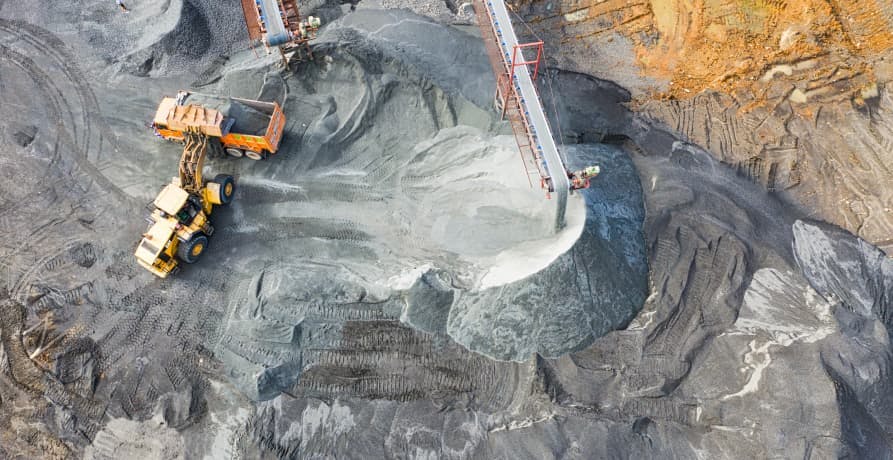
How Do Lithium Batteries Cause Environmental Harm?
Lithium batteries are often touted as a green solution, key to reducing our reliance on fossil fuels and mitigating climate change through the avoidance of greenhouse gas emissions. They power everything from electric vehicles to smartphones, positioning themselves at the heart of the clean energy transition.
However, the environmental benefits of lithium batteries come with substantial hidden costs. The extraction and processing of lithium and other rare earth metals necessary for these batteries have significant negative impacts on the environment and local communities. As demand for these batteries grows, so does the scale of these impacts.
Land Degradation and Habitat Loss
Lithium mining, particularly through open-pit methods, leads to extensive land degradation. Large areas of land are cleared to make way for mining operations, destroying habitats and causing significant loss of biodiversity. In Western Australia for example, the expansion of the Greenbushes lithium mine has been particularly controversial. It involved the clearing of approximately 350 hectares of native vegetation, affecting several threatened species, including the black cockatoo and the Western ringtail possum.
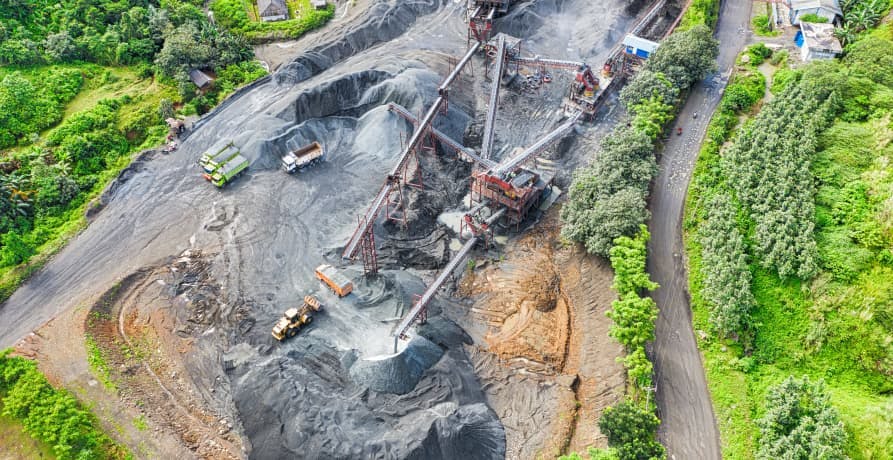
Water Depletion and Contamination
One of the most critical environmental issues associated with lithium extraction is water usage. The production of one ton of lithium requires approximately 2.2 million liters of water, diverting scarce water resources away from local agriculture and indigenous communities. The extraction process also leads to soil degradation, making it unsuitable for vegetation and disrupting local ecosystems.
In arid regions like the Lithium Triangle in South America - encompassing parts of Bolivia, Argentina, and Chile - lithium extraction consumes vast amounts of water. In Chile's Salar de Atacama, mining operations consume around 21 million liters of water per day and use around 65% of the region’s water, leading to severe water shortages.
Moreover, the extraction process can lead to water contamination. For example, in 2009, a lithium mining project located in China, known as the Ganzizhou Rongda Lithium mine, was blamed for leaking toxic chemicals into the Liqi River which flows through Tibet. Villagers in the area have accused the facility of poisoning the waters, resulting in the death of vast numbers of fish, destroying sacred grassland, and even killing hundreds of yak who happened to drink from the river water.

Lithium Leach Field
Lithium leach fields, used to extract lithium from ore using chemical solutions, present significant environmental challenges. The chemicals used in these processes can seep into the soil and groundwater surrounding the lithium extraction field, causing long-term environmental damage.
Additionally, the process of leaching and the evaporation of solvents can release harmful chemicals into the air, contributing to air pollution and posing health risks to local populations. The repeated use of chemical solvents can also degrade soil quality, leading to long-term ecological imbalances.
In the case of the Soquimich lithium mine in the Atacama Desert, run by Sociedad Química y Minera (SQM), these environmental impacts have been extensively documented. Reports have highlighted severe water depletion, where mining activities consume vast amounts of water, exacerbating the arid conditions of the region and threatening the livelihoods of local farmers and indigenous communities. Additionally, the process has led to soil contamination and degradation, making the land unsuitable for agriculture and disrupting local ecosystems. Air quality has also been compromised due to the release of harmful chemicals during the extraction process, posing health risks to nearby residents. These issues illustrate the broader implications of lithium extraction on both local environments and global sustainability efforts, underscoring the urgent need for more sustainable mining practices and regulatory oversight.
Threat to Indigenous Populations
Because the majority of salt flat brine facilities lie within South America's so-called ‘Lithium Triangle' - an area that is home to a number of Indigenous communities - these lithium extraction facilities and operations are increasingly finding themselves at odds with local populations.
As we've already touched on, lithium extraction in Chile's Salar de Atacama region has been fostering tension between lithium extraction companies and the indigenous population.
👉The Atacama region in northern Chile is home to around 40% of the world's lithium supply. However, Indigenous communities and scientists warn that lithium extraction in the region will destroy the ecosystem and damage Indigenous communities' ways of life.
For such communities, the water beneath the salt planes not only serves a practical purpose but also has a cultural and spiritual significance. For the Likan-Antai people for example, who call the Atacama Desert region in the North of Chile home, water is a source of life and is considered to be as important as any member of their community.
Carbon Footprint and Energy Consumption
The production of lithium batteries is energy-intensive and has a substantial carbon footprint. The entire lifecycle of a lithium battery - from mining to manufacturing and transportation - requires significant energy, much of which comes from fossil fuels.
For example, according to McKinsey, producing the large lithium-ion batteries used to power electric vehicles (EVs) is the biggest source of embedded emissions for both electric cars and trucks, accounting for about 40 to 60 percent of total production emissions. In other words, making batteries can generate as much emissions as producing all the other materials that go into making an EV - or even more.
An EV has roughly double the production footprint of a typical internal combustion engine (ICE) vehicle. Both have similar embedded production emissions from, for example, producing the body of the vehicle, which ranges between five and ten tons of CO2e emissions, depending on its size and production location. However, producing a typical EV (with a 75-kWh battery pack) emits more than seven tons of CO2e emissions from the battery alone.
This high production footprint raises questions about the overall environmental benefits of EVs and lithium batteries, particularly if the electricity used to charge them is not sourced from renewable energy. Reducing these embedded emissions is crucial to maximizing the environmental benefits of EVs, which could involve advancements in battery technology, more efficient manufacturing processes, and increased use of renewable energy throughout the production lifecycle.
The Harm from Other Metals in Lithium Batteries
The harm to the environment doesn't start and end with extracting lithium. Unfortunately, there are several other ingredients in lithium and lithium-ion batteries that are also cause for concern.
Cobalt and nickel for example are two components that come with a heavy environmental cost.
Cobalt Mining
Cobalt is mined in parts of Africa, primarily central Africa and the Democratic Republic of Congo. What makes cobalt so harmful to the environment is that it's incredibly toxic, starting from the moment it's extracted.
👉 The DRC is thought to contain half of the world's cobalt reserves and currently accounts for 70% of global cobalt production.
What's compounded the issue is that a sharp rise in price for the metal has fuelled a rise in artisanal mines - ie. ad-hoc setups that often rely on child labor to extract the material. Workers are often denied protective equipment, and practices of extraction are incredibly unsafe.
These ad-hoc mining practices don't just have a human toll, there's an environmental cost too. Unregulated toxic dumping is destroying landscapes, polluting water supplies, and even contaminating crops.
Studies of bodies of water lying close to cobalt mines have found that fish have high levels of the metal. This contamination is destroying ecosystems and the harmful minerals can be easily passed to humans when they eat the fish or drink from the same water supply. And since cobalt is considered to be a potential carcinogen it represents a significant human health hazard.
Nickel Mining
Nickel is a metal that is widely used in various industrial and consumer goods, it's also a key ingredient in lithium batteries. However, mining of this metal has been linked to environmental issues such as air and water pollution, soil degradation, and the destruction of natural habitats.
Nickel mines are primarily located in Australia, Canada, Indonesia, Russia, and the Philippines. The regulations and laws governing mining practices vary widely between these countries, leading to significant differences in safety standards and environmental protections. In some regions, lax regulations can result in more severe environmental degradation and greater health risks for workers and local communities.
The process of extracting nickel involves several high-risk steps. The ore is typically mined from open pits or underground mines and then processed to extract the nickel. This processing releases plumes of sulfur dioxide and dust containing nickel, copper, cobalt, and chromium, which are known to be harmful to human health. Sulfur dioxide is a significant air pollutant that can cause respiratory problems and acid rain, while the dust can be carcinogenic.
In regions with less stringent environmental regulations, the risk to workers, local communities, and the surrounding environment is particularly high. For example, in Indonesia, the rapid expansion of nickel mining has led to widespread deforestation and pollution of water sources, impacting local biodiversity and human health. And in the Philippines, nickel mining operations have been linked to the contamination of coastal waters, affecting marine life and fishing communities.
Sustainability Challenges and Lithium Battery Alternatives
Regardless of environmental concerns, the bottom line is that minerals such as lithium, cobalt, and nickel are finite resources, which means that at some point they'll run out. Therefore, researchers across the world are currently looking for alternatives that are not only more environmentally friendly but also sustainable.
One promising alternative is sodium-ion batteries. Unlike lithium, sodium is abundant and widely available, making it a more sustainable choice. Sodium-ion batteries can be manufactured using similar processes and equipment as lithium-ion batteries, which facilitates an easier transition for manufacturers. Additionally, sodium extraction is far less water-intensive compared to lithium, which significantly reduces its environmental footprint. For example, it takes 682 times more water to extract one tonne of lithium than to extract one tonne of sodium.
Sodium-ion batteries are already being implemented in various applications, particularly for energy storage in renewable energy systems. While they have a lower energy density compared to lithium-ion batteries, advancements are being made to improve their efficiency and lifespan. These batteries are safer and more stable, with less risk of overheating and catching fire, which is a notable advantage over lithium-ion technology.
Another alternative being explored is solid-state batteries, which use solid electrolytes instead of liquid ones. This technology offers higher energy density and improved safety, as it eliminates the risk of leaks and reduces flammability. Solid-state batteries are still in the development stage but hold great promise for the future of energy storage.
Additionally, lithium-sulfur batteries are emerging as a potential replacement. These batteries use sulfur in the cathode, which is more abundant and cheaper than cobalt and nickel used in traditional lithium-ion batteries. Lithium-sulfur batteries offer higher energy density and are lighter in weight, making them suitable for applications like drones and portable electronics.
The Paradox of Lithium Batteries
Out of the frying pan and into the fire - perhaps this phrase best sums up our increasing dependence on lithium and lithium-ion batteries. Yes, it's true that lithium batteries offer a way out of our reliance on incredibly damaging fossil fuels. However, it comes at a cost because mining the raw materials needed to produce these batteries is also harmful to the environment. The extraction processes for lithium, cobalt, and nickel are energy-intensive and often result in significant environmental degradation, water depletion, and contamination, not to mention the socio-economic impacts on local communities in mining regions.
Moving forward, innovation and sustainable practices are crucial to addressing this paradox. Researchers worldwide are investigating more environmentally friendly and sustainable alternatives to lithium-ion batteries, and advancements in battery recycling will help minimize the extraction of new raw materials and mitigate environmental harm.
What about Greenly?
In today's rapidly evolving market, sustainability is a crucial component of business strategy. Greenly helps you proactively engage in sustainability, positioning your company as a leader in environmental stewardship.
Carbon Management
Greenly offers a range of services to help you effectively manage your carbon footprint:
- Measurement of GHG Emissions: Track Scope 1, 2, and 3 emissions using advanced technology for an understanding of your greenhouse gas footprint.
- Custom Action Plans: Develop tailored strategies with our climate experts, focusing on key areas for improvement and implementing effective changes.
Decarbonizing Your Supply Chain
Greenly helps you engage suppliers and transition to low-carbon options, achieving greater transparency and effectively managing Scope 3 emissions. Our sustainable sourcing initiatives build greener partnerships and reduce emissions throughout your supply chain.
Intuitive and Seamless Platform
Our user-friendly platform simplifies the process of calculating and monitoring your carbon footprint. With Greenly, your business can effortlessly manage its environmental impact, meet ESG goals, and enhance sustainability.
The Benefits of Early Adoption
Acting now on sustainability prepares you for future regulations and positions your company as a proactive leader in environmental responsibility. Greenly can help you seize these opportunities, transforming your business strategy from reactive to proactive and setting you apart from the competition.
Why Choose Greenly?
Greenly offers comprehensive support for your sustainability journey, from carbon measurement and custom action plans to supply chain decarbonization and seamless platform integration. With our help, your business can significantly reduce its environmental impact and achieve lasting sustainability.
Contact Greenly today to start leading the way in sustainability and build a greener future for your company.











